 "ttyymmnn" (ttyymmnn)
"ttyymmnn" (ttyymmnn)
12/04/2015 at 12:35 • Filed to: planelopnik, planelopnik history
 8
8
 19
19
 "ttyymmnn" (ttyymmnn)
"ttyymmnn" (ttyymmnn)
12/04/2015 at 12:35 • Filed to: planelopnik, planelopnik history |  8 8
|  19 19 |
Welcome to This Date in Aviation History , getting you caught up on milestones and important historical events in aviation from December 2 through December 4.
!!! UNKNOWN CONTENT TYPE !!!
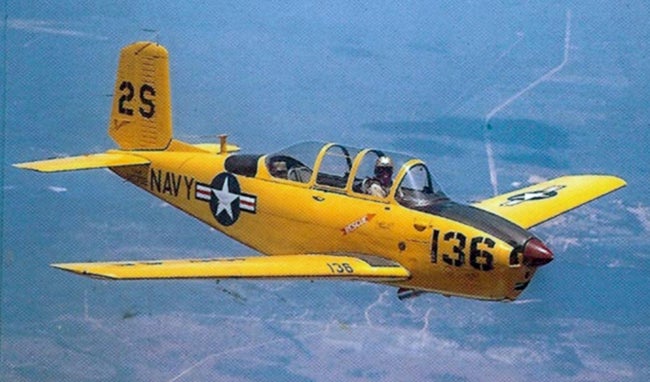
December 2, 1948 – The first flight of the Beechcraft T-34 Mentor. For many years, the !!!error: Indecipherable SUB-paragraph formatting!!! was the primary aircraft trainer for the US military, as well as many other air forces around the world. Over 15,000 Texans were built over the years, and it was a tough act to follow. But with the advent of the jet engine, and with it, the turboprop, Beechcraft rolled the dice and decided to develop a replacement for the venerable T-6, even though the US military didn’t request one. Walter Beech, the head of Beechcraft, began development of the Model 45, one of which was built with the V-tail used on the !!!error: Indecipherable SUB-paragraph formatting!!! , though for the Mentor, Beech dropped that in favor of a traditional tailplane to appeal to conservative military brass. The fuselage was narrowed, and a bubble canopy was installed to allow better visibility for the tandem cockpit. The aircraft was also significantly strengthened to hold up under the rigors of military training. When production began in 1953, Beechcraft had settled on the !!!error: Indecipherable SUB-paragraph formatting!!! engine, a flat six cylinder engine that offered 225 hp. Beechcraft began with two variants, the T-34A for the US Air Force and the T-34B, which was optimized for carrier operations. Introduction of both variants took place in 1953. But it soon became clear that, with the jet engine taking over most of the powerplants in the US military, that a jet engine version of the Mentor might be required. Again, as an internal project, Beech developed the Model 73 Jet Mentor, with a single jet engine, but the Navy passed on that aircraft, and the Air Force chose the !!!error: Indecipherable SUB-paragraph formatting!!! as its primary jet trainer. Production of the T-34 stopped for 15 years, but was restarted at the behest of the US Navy to produce a turboprop powered version, and this aircraft, powered by a !!!error: Indecipherable SUB-paragraph formatting!!! turboprop engine, entered service as the T-34C and remained in service until the 1990s, when it was eventually replaced by another turboprop powered trainer, the !!!error: Indecipherable SUB-paragraph formatting!!! , a derivative of the !!!error: Indecipherable SUB-paragraph formatting!!! . In all, 2,300 Mentors were built throughout the two production runs, and many remain in private hands where they are frequently seen on the air show circuit. (US Navy photo)
!!! UNKNOWN CONTENT TYPE !!!
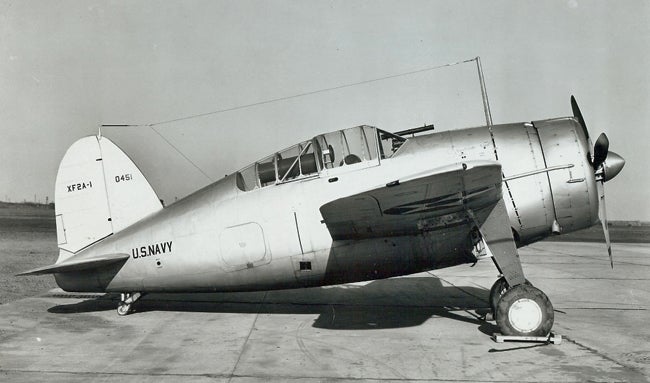
December 2, 1937 – The flight of the Brewster F2A Buffalo.
In the years since WWII, the Bewster Buffalo has suffered a reputation as a terrible fighter plane. Short, fat, and ungainly, it was clearly no match for more advanced Japanese designs. However, the Buffalo’s reputation as a bad fighter plane isn’t entirely warranted, as other nations, particularly Finland, flew the Buffalo with great effect. In fact, Finland’s greatest ace,
!!!error: Indecipherable SUB-paragraph formatting!!!
, scored 34 of his eventual 94.5 kills while flying a Buffalo against Russian fighters. But for the Americans in the Pacific, it was a much different story. The Buffalo traces its history back to 1935, and the US Navy’s request for a new fighter to replace the
!!!error: Indecipherable SUB-paragraph formatting!!!
. Two aircraft initially entered the competition. The first was the
!!!error: Indecipherable SUB-paragraph formatting!!!
, a biplane fighter with retractable landing gear (which would later be developed into the
!!!error: Indecipherable SUB-paragraph formatting!!!
). The second was the Buffalo, and then the Navy allowed a third aircraft, a navalized version of the
!!!error: Indecipherable SUB-paragraph formatting!!!
, but the P-35 wasn’t fast enough and was eliminated. The Buffalo was a very modern aircraft by 1930s design standards. It was all-metal with flush-riveted, stressed aluminum construction, split flaps, and hydraulically operated, retractable landing gear. However, it still did not have self-sealing fuel tanks or armor plating to protect the pilot. It’s Wright Cyclone radial engine provided a stout 950 hp, and the Buffalo had an impressive climb rate, but its single-stage supercharger meant that high altitude performance suffered significantly. Armament was provided by a single .50 caliber machine gun and a single .30 caliber machine gun, both mounted in the nose. The F2A-2 attempted to address some of the problems of the early model by providing more armament and a more powerful engine, but the resulting weight gain nullified any performance improvements. The final version, the F2A-3 added improved range and provision for underwing stores, but by now, the Navy and Marine Corps had lost confidence in the Buffalo, and by 1940 it was clear that the F2A was completely outclassed by more nimble Japanese aircraft such as the
!!!error: Indecipherable SUB-paragraph formatting!!!
and
!!!error: Indecipherable SUB-paragraph formatting!!!
. Remaining Buffalos were removed from combat following the
!!!error: Indecipherable SUB-paragraph formatting!!!
and transferred to Navy training squadrons in the US. For the Finns, though, it was quite a different story, where more agreeable weather, better maintenance practices and superior tactics led to the Buffalo being a very effective fighter, particularly during the
!!!error: Indecipherable SUB-paragraph formatting!!!
. Just over 500 Buffalos were built, and they ended their service in 1948.
(US Navy photo)
!!! UNKNOWN CONTENT TYPE !!!
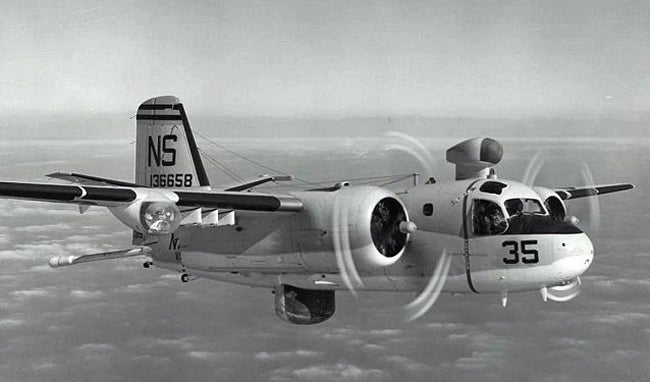
December 4, 1952 – The first flight of the Grumman S-2 Tracker.
Following WWII, the US Navy needed a more effective way to combat the submarines that menaced their fleets. Since antisubmarine warfare (ASW) equipment was so large in those early days, the Navy’s initial solution was to split the load between two aircraft, one hunter and one killer. Grumman developed the
!!!error: Indecipherable SUB-paragraph formatting!!!
system of two planes, but clearly, this was just a stopgap measure until a dedicated ASW aircraft could be developed. That aircraft would be the S-2 Tracker, the first dedicated, all-in-one ASW aircraft in the US Navy. The Tracker was a large, twin engine aircraft powered by a pair of radial engines mounted on a high wing, an arrangement that allowed for the most possible space inside fuselage. Sonobuoys that could be dropped into the ocean to track submarines were housed in the rear of the engine nacelles. Internally, the S-2 could carry two torpedoes or a single nuclear depth charge, and hard points on the wings could carry rocket pods, depth chargers or four additional torpedoes. To track the submarines, the crew used an AN/APS-38 radar that was housed in a retractable radome, as well as a Magnetic Anomaly Detector boom in the tail that detects tiny variations in the Earth’s magnetic field to snoop out submerged subs. A 70-million candlepower search light was fitted to the starboard wing. The need for the Tracker was so great, and the Navy was so sold on the design that they ordered two prototypes and fifteen production aircraft at the same time, with the first aircraft entering service in 1954, and the aircraft was soon upgraded with modern electronics. The S-2B received the Jezebel passive long-range acoustic search equipment, which worked in conjunction with Julie, an active acoustic echo ranging detection system that used explosive charges to locate underwater subs. The S-2C was an enlarged aircraft that could carry yet more electronic snooping hardware, and the S-2D had a larger wing, more fuel capacity, and more sonobuoys stored in the engine nacelles. The Tracker was widely exported to western allies, and nearly 1,300 were produced, including approximately 100 that were built under license by de Havilland in Canada and received the designation CS2F. With all the electronics stripped out, the S-2 served flew in the role of Carrier Onboard Delivery (COD) as the
!!!error: Indecipherable SUB-paragraph formatting!!!
.
(US Navy Photo)
!!! UNKNOWN CONTENT TYPE !!!
Short Take Off
!!! UNKNOWN CONTENT TYPE !!!
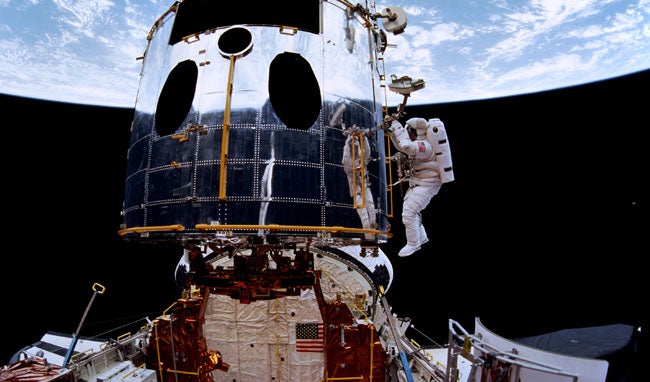
December 2, 1993 – The launch of Space Shuttle
Endeavour
on STS-61, the first mission to service the Hubble Space Telescope (HST).
The
!!!error: Indecipherable SUB-paragraph formatting!!!
was launched in 1990, but faulty optics from an incorrectly ground mirror caused distorted images. In one of the most complex Shuttle missions to date, the seven specially trained astronauts performed five extended extra-vehicular activity (EVA) periods to replace the
!!!error: Indecipherable SUB-paragraph formatting!!!
with the
!!!error: Indecipherable SUB-paragraph formatting!!!
corrective optics package, install the new
!!!error: Indecipherable SUB-paragraph formatting!!!
, replace four gyroscopes, and upgrade the computers. The HST was then boosted to a higher orbit. NASA considered the mission a complete success when Hubble began transmitting some of the sharpest
!!!error: Indecipherable SUB-paragraph formatting!!!
of the cosmos ever taken. Four additional servicing missions were flown, the last in 2009.
(NASA photo)
!!! UNKNOWN CONTENT TYPE !!!
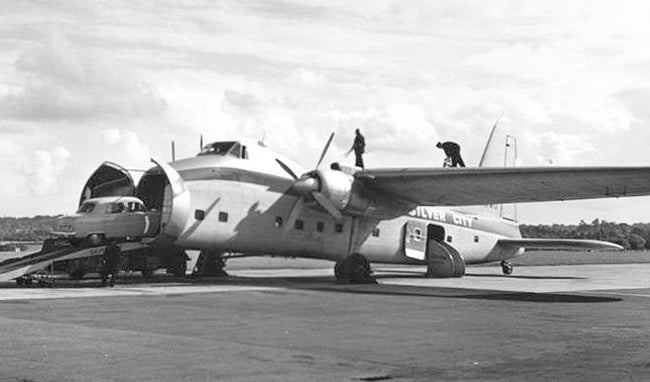
December 2, 1945 – The first flight of the Bristol Type 170 Freighter. The 170 was originally created as a measure to keep Bristol employees working while the huge, and ultimately unsuccessful, !!!error: Indecipherable SUB-paragraph formatting!!! was under development. Placement of the cockpit above the cargo hold helped accommodate as large a payload as possible, and clamshell doors at the front facilitated cargo transfer. An all-passenger variant, called the Wayfarer, was also developed, as well as a car ferrying version that allowed passengers to bring their cars along on trips to the Continent. Bristol built 214 aircraft, and they served numerous civilian and military carriers around the world. (Photo by RuthAS via !!!error: Indecipherable SUB-paragraph formatting!!! )
!!! UNKNOWN CONTENT TYPE !!!
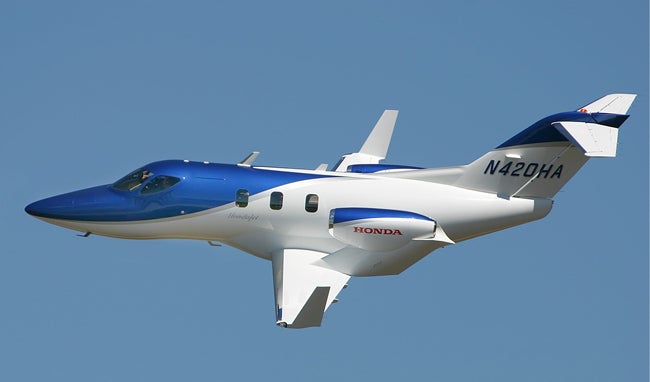
December 3, 2003 – The first flight of the Honda HA-420 HondaJet, the first aircraft developed by Honda Aircraft Company. The HondaJet was designed in Japan and will be built in the United States at Honda’s factory in Greensboro, North Carolina. This first flight was performed by a proof-of-concept aircraft, not a final production model, and Honda announced in 2006 that it would commercialize the new light business jet. In March 2015, the HondaJet received its Provisional Type Certification from the FAA, the penultimate step to final certification and customer delivery. Honda hopes to complete final certification by the end of 2015. (Photo by Sergey Ryabtsev via !!!error: Indecipherable SUB-paragraph formatting!!! )
!!! UNKNOWN CONTENT TYPE !!!

December 3, 1944 – The rescue of survivors from the destroyer USS
Cooper
(DD-695).
While on a mission to intercept Japanese supply ships in Ormoc Bay near the Philippine Islands, the
Cooper
was torpedoed by a Japanese destroyer and sunk. 191 crewmembers were lost, but 168 were rescued, including 56 who were loaded into a single US Navy
!!!error: Indecipherable SUB-paragraph formatting!!!
belonging to Patrol Bombing Sqn VPB-34 and commanded by Lt. Joe Frederick Ball. For his actions, Ball received the
!!!error: Indecipherable SUB-paragraph formatting!!!
. The
!!!error: Indecipherable SUB-paragraph formatting!!!
reads in part:
[Ball] carried out the entire rescue with consummate skill and with total and repeated disregard for his personal safety, remaining on the water for almost an hour with many enemy planes in the vicinity, and repeatedly taxiing his plane well within point-blank range of guns on the enemy-held coastline and of two enemy warships, in his effort to pick up survivors. When his plane could hold no more, he was forced to make a run of three miles in order to get off the water.
A second Catalina rescued 48 survivors at one time.
(US Navy photo)
!!! UNKNOWN CONTENT TYPE !!!
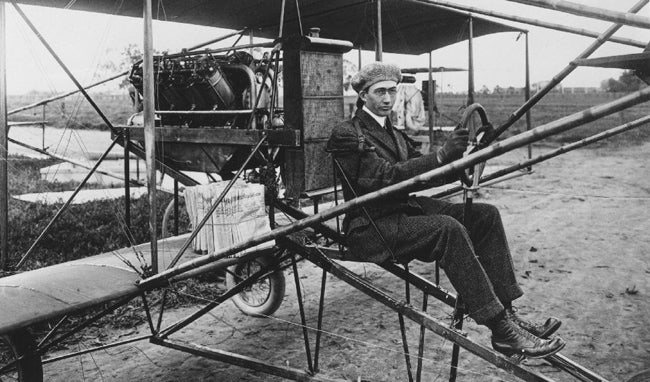
December 4, 1955 – The death of Glenn L. Martin,
early American aviation pioneer who founded his own aircraft company in 1912. His first successful aircraft was the
!!!error: Indecipherable SUB-paragraph formatting!!!
, a large biplane bomber that served in WWI. Martin went on to create many successful aircraft during WWII, notably the
!!!error: Indecipherable SUB-paragraph formatting!!!
and the
!!!error: Indecipherable SUB-paragraph formatting!!!
bombers, as well as large flying boats such as the
!!!error: Indecipherable SUB-paragraph formatting!!!
and the
!!!error: Indecipherable SUB-paragraph formatting!!!
. Following the war, Martin found success in the aerospace industry, building the
!!!error: Indecipherable SUB-paragraph formatting!!!
rocket, the first American rocket built specifically for orbital launch. Martin followed the Vanguard with the
!!!error: Indecipherable SUB-paragraph formatting!!!
series of larger rockets. In 1961, a merger formed
!!!error: Indecipherable SUB-paragraph formatting!!!
, and that company eventually merged with Lockheed to form
!!!error: Indecipherable SUB-paragraph formatting!!!
in 1995.
(Photo via San Deigo Air and Space Musem)
!!! UNKNOWN CONTENT TYPE !!!
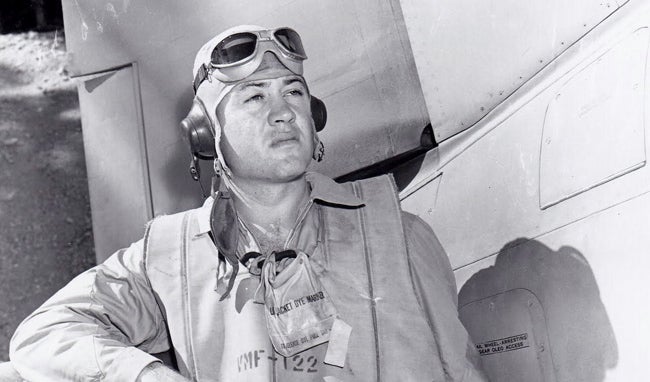
December 4, 1912 – The birth of Gregory “Pappy” Boyington.
Boyington began his military flying career as an aviation cadet in the US Marine Corps reserve, before resigning his commission to fly with the
!!!error: Indecipherable SUB-paragraph formatting!!!
, better known as the Flying Tigers, fighting for Nationalist China against the Japanese. Returning to the USMC in 1942 at the rank of major, Boyington became famous as the leader of
!!!error: Indecipherable SUB-paragraph formatting!!!
, a squadron flying the
!!!error: Indecipherable SUB-paragraph formatting!!!
in the Pacific. In January 1944, Boyington tied the record of famed WWI ace
!!!error: Indecipherable SUB-paragraph formatting!!!
with 26 kills, but was then shot down and ended the war as a POW. Following the war, Boyington received the
!!!error: Indecipherable SUB-paragraph formatting!!!
and the
!!!error: Indecipherable SUB-paragraph formatting!!!
for his service. Boyington died in 1988 at the age of 75.
!!! UNKNOWN CONTENT TYPE !!!
!!! UNKNOWN HEADER TYPE (MULTI-LINE BREAK?) !!!
!!! UNKNOWN CONTENT TYPE !!!
!!! UNKNOWN CONTENT TYPE !!!
!!! UNKNOWN CONTENT TYPE !!!
!!! UNKNOWN CONTENT TYPE !!!
If you enjoy these Aviation History posts, please let me know in the comments. And if you missed any of the past articles, you can find them all at
!!!error: Indecipherable SUB-paragraph formatting!!!
.
!!! UNKNOWN CONTENT TYPE !!!
 RamblinRover Luxury-Yacht
> ttyymmnn
RamblinRover Luxury-Yacht
> ttyymmnn
12/04/2015 at 12:55 |
|
One interesting note about the Buffalo: even if not really more refined than the earliest Zeros, it was still a significantly more modern aircraft than the Japanese army’s Ki-27 “Nate”, ceding the latter’s edge in maneuverability. It wasn’t (on paper) obviously worse than the Oscar, and the Oscar wasn’t even better armed until some later models. So, the Buffalo suffered from the significant design priority mismatch and flawed tactics similarly to the P40 (though not being as good as it), more so than being inherently “bad”. It’s interesting, however, that the maneuverability advantage over all else so set itself in Japanese tactics that when latter American fighters were both rugged *and* maneuverable, there was no answer to that. See the bloodbath inflicted by the Hellcat, for one.
 RallyWrench
> ttyymmnn
RallyWrench
> ttyymmnn
12/04/2015 at 13:02 |
|
How does one score .5 of a kill? An assist?
 Distraxi's idea of perfection is a Jagroen
> ttyymmnn
Distraxi's idea of perfection is a Jagroen
> ttyymmnn
12/04/2015 at 14:01 |
|
The wife’s father flew Bristol Freighters for the RNZAF. Apparently they were phenomenally noisy aircraft from the inside: despite a career flying prop freighters, it was the 3 years in Bristols he blamed for his deafness. In the RNZAF they inherited the nickname “10000 rivets flying in loose formation” from the Shackleton.
They were also apparently a very forgiving aircraft: he earned an AFC as navigator (and the pilot a DFC) after an incident where they had to fly 100 miles home at treetop height, at below rated stall speed, on one engine, after having the other shot out during a low level supply drop in the Malayan Emergency. Not mentioned in the citation (due to the crew not feeling the brass needed to know) was that the (unrated) navigator was flying the plane at the time of the engine loss, and that they were deliberately below stall speed as he and the pilot were competing over how accurately they could place the dropped cargo! With one engine they couldn’t get back into normal flight and had to wallow the whole way home at 45 knots, flying round any terrain because they couldn’t climb over it, while the crew chief threw anything he could unbolt out the back. He reckoned that in any other plane they wouldn’t have got home alive, but in any other plane they wouldn’t have been daft enough to play silly buggers in combat in the first place...
 The Compromiser
> RallyWrench
The Compromiser
> RallyWrench
12/04/2015 at 18:24 |
|
If more than one pilot claimed it they would divide it up between the pilots. If it was a bomber they could have taken a few planes to take it out. A lot of chaos in a dogfight I heard.
 ttyymmnn
> Distraxi's idea of perfection is a Jagroen
ttyymmnn
> Distraxi's idea of perfection is a Jagroen
12/04/2015 at 19:14 |
|
That’s a heck of a story. Thanks for sharing. I had to look up the Malayan Emergency. I hadn’t heard about it, but it has all the hallmarks of what America was going to be dealing with a few years later in Vietnam. Wikipedia leads with this picture of an RAAF Avro Lincoln dropping bombs during the Emergency. I guess it really wasn’t all that removed from WWII, at least at first.
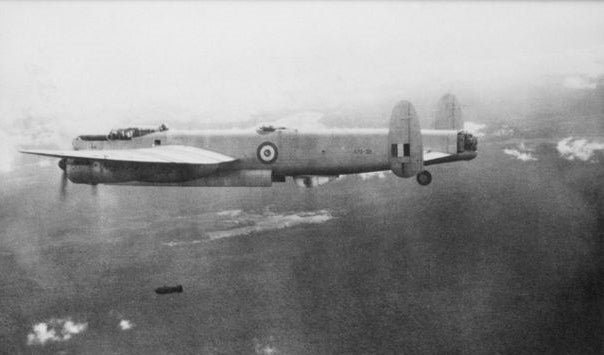
 Distraxi's idea of perfection is a Jagroen
> ttyymmnn
Distraxi's idea of perfection is a Jagroen
> ttyymmnn
12/04/2015 at 19:20 |
|
Probably closer to Korea than Vietnam in nature, I guess. Except that the good guys won, and it wasn’t a “war”, honest Guv!
 Rusty Vandura - www.tinyurl.com/keepoppo
> ttyymmnn
Rusty Vandura - www.tinyurl.com/keepoppo
> ttyymmnn
12/04/2015 at 19:24 |
|
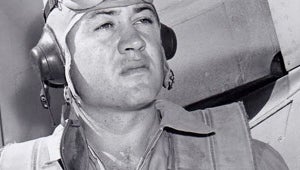
Remember “Baa Baa Black Sheep?” I haven’t seen an episode in more than 30 years, but I bet it was awful.
 ttyymmnn
> Distraxi's idea of perfection is a Jagroen
ttyymmnn
> Distraxi's idea of perfection is a Jagroen
12/04/2015 at 19:25 |
|
Well, they had barbed wire, flood lit camps for the forced relocation of locals (except in Vietnam they called them “strategic hamlets), the use of defoliants, Communist bad guys (“bad” depending on what side you were on), all that. But yes, the geurillas lost that one.
 ttyymmnn
> Rusty Vandura - www.tinyurl.com/keepoppo
ttyymmnn
> Rusty Vandura - www.tinyurl.com/keepoppo
12/04/2015 at 19:26 |
|
I remember it well, and when I was looking for a picture of Pappy Boyington for this post there were plenty of pictures of Robert Conrad. I bet those shows are on YouTube now, or maybe Netflix. It might be fun to watch, if only for the air-to-air shots. I’m sure the Zeros were fake, but we didn’t know any better back then.
 Rusty Vandura - www.tinyurl.com/keepoppo
> Distraxi's idea of perfection is a Jagroen
Rusty Vandura - www.tinyurl.com/keepoppo
> Distraxi's idea of perfection is a Jagroen
12/04/2015 at 19:28 |
|
Thanks for sharing that great story!
 Rusty Vandura - www.tinyurl.com/keepoppo
> ttyymmnn
Rusty Vandura - www.tinyurl.com/keepoppo
> ttyymmnn
12/04/2015 at 19:34 |
|

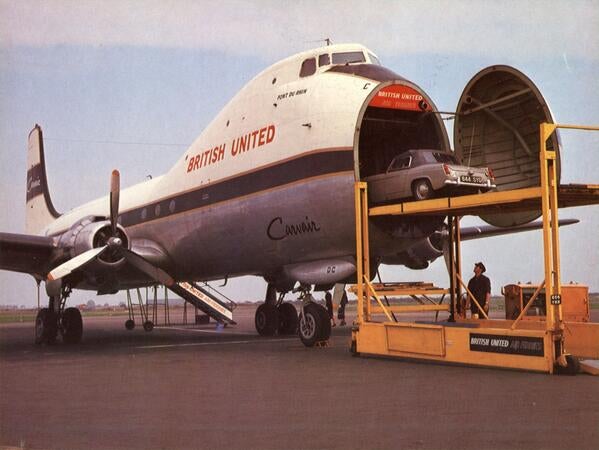
I was reminded of the Carvair, which made an appearance in “Goldfinger.”
 ttyymmnn
> Rusty Vandura - www.tinyurl.com/keepoppo
ttyymmnn
> Rusty Vandura - www.tinyurl.com/keepoppo
12/04/2015 at 19:36 |
|
Yup, except that was based on the DC-4.
 Distraxi's idea of perfection is a Jagroen
> ttyymmnn
Distraxi's idea of perfection is a Jagroen
> ttyymmnn
12/04/2015 at 19:37 |
|
The Brits were always more ruthless than many of the colonial powers, including the Americans. Not straight-out abusively brutal like the French or Belgians, but they were first out of the box with concentration camps, strategic bombing, defoliants, all sorts of evil. Look up the Boer War if you want to see some nasty “win at all costs” shit.
Guess that’s how they built themselves an Empire....
 ttyymmnn
> Distraxi's idea of perfection is a Jagroen
ttyymmnn
> Distraxi's idea of perfection is a Jagroen
12/04/2015 at 19:38 |
|
How they built their empire, and how they kept it. Except the guerrillas won in 1783.
 Rusty Vandura - www.tinyurl.com/keepoppo
> ttyymmnn
Rusty Vandura - www.tinyurl.com/keepoppo
> ttyymmnn
12/04/2015 at 19:40 |
|
Clearly not the same airplane, just a mention.
 ttyymmnn
> RallyWrench
ttyymmnn
> RallyWrench
12/04/2015 at 23:39 |
|
Compromiser got to this before I could. Imagine having two or three attackers shooting at the same time. It would be difficult, if not impossible, to know for sure which pilot actually caused the plane to crash. I think that if there are more than two involved, everybody gets half a kill. To this day, there is great debate, and rancor, over
who actually shot down Yamamoto
.
 RallyWrench
> The Compromiser
RallyWrench
> The Compromiser
12/04/2015 at 23:58 |
|
Makes sense, much thanks.
 RallyWrench
> ttyymmnn
RallyWrench
> ttyymmnn
12/05/2015 at 00:03 |
|
Makes sense. Now that you remind me, I think I recall having read about the Yamamoto debate some years back.
 ttyymmnn
> RallyWrench
ttyymmnn
> RallyWrench
12/05/2015 at 00:28 |
|
It’s an interesting story (
Operation Vengeance
), and it was a bad blow to the Japanese war effort, though the end was inevitable anyway. It’s a shame there has to be so much acrimony over it, and it exists to this day.